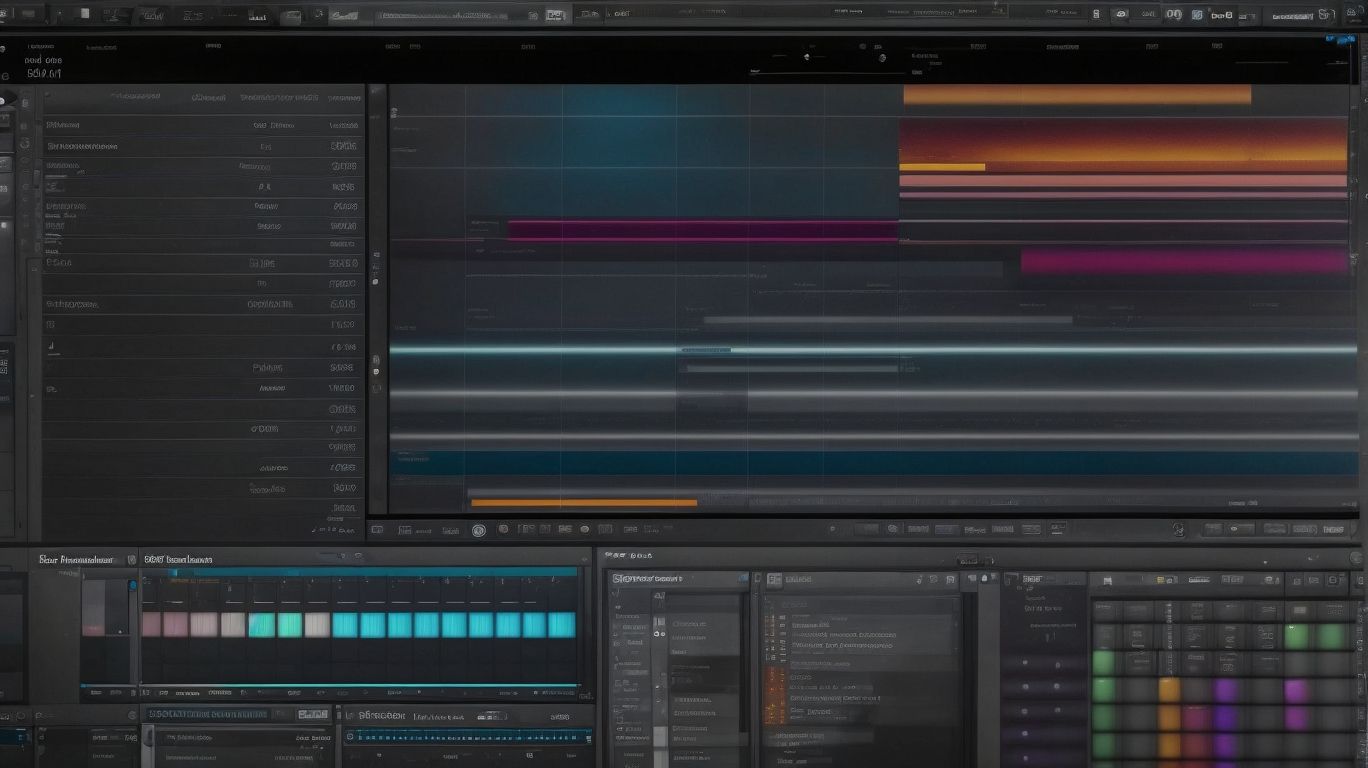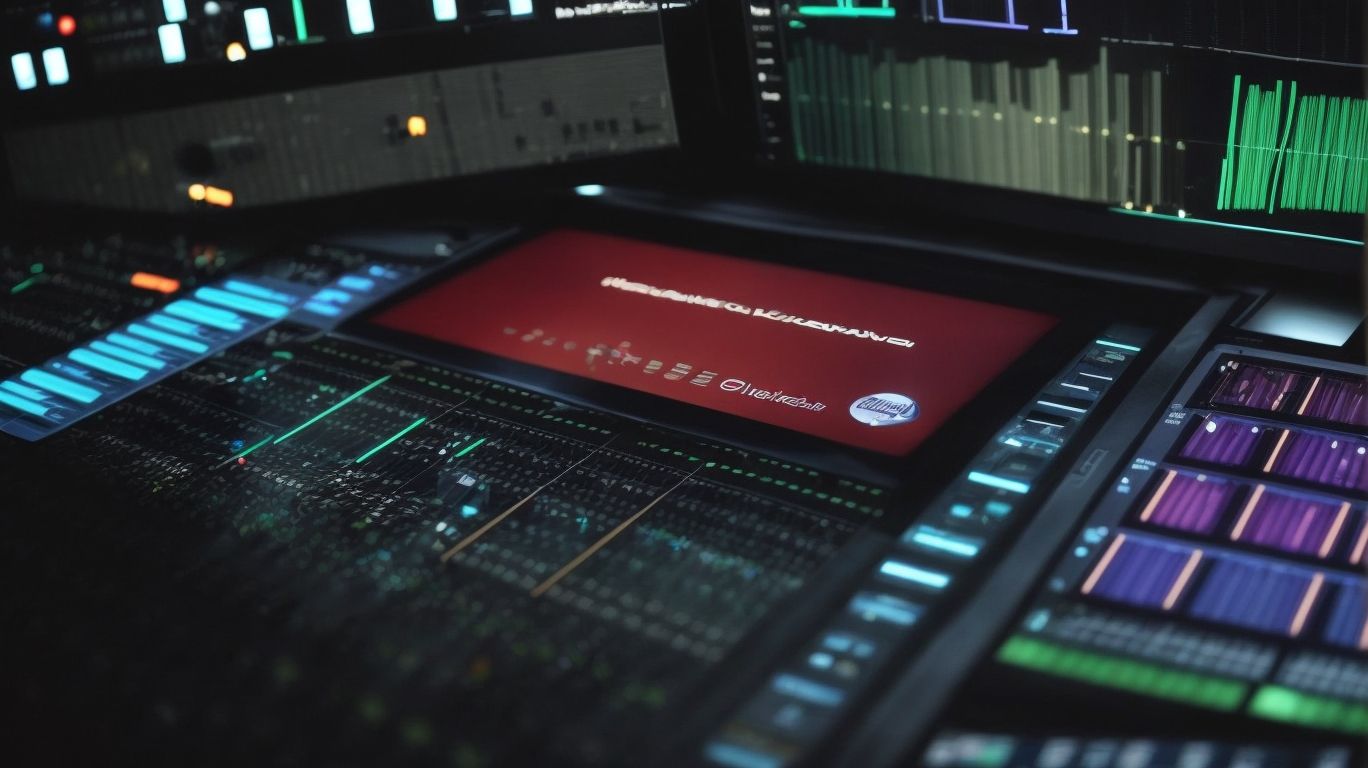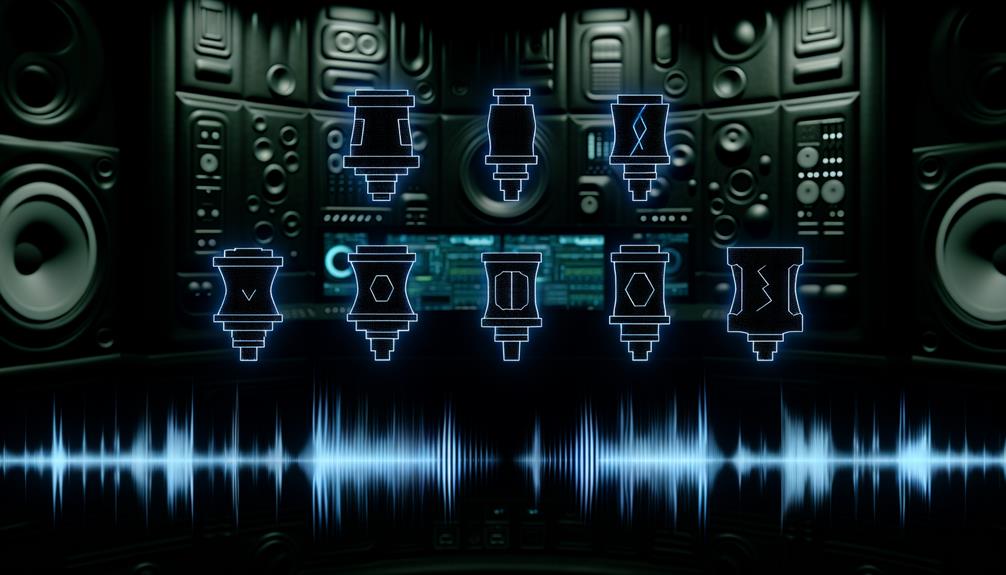No products in the cart.
In the fast-paced world of music production, having the right tools at your disposal can make all the difference. Music production software has become an essential element for musicians, producers, and sound engineers looking to create high-quality music in the digital age. From digital audio workstations (DAWs) to virtual instruments and effects plugins, the options are vast and varied. In this article, we will explore the world of music production software, discussing its importance, benefits, different types, and factors to consider when choosing the right software for your needs. We will delve into the top music production software for 2024, providing insights into the leading options available in the market. Whether you’re a seasoned professional or a budding enthusiast, understanding the landscape of music production software is crucial for elevating your creative endeavors. So, let’s embark on this journey to discover the best music production software for 2024 and unlock the potential to bring your musical visions to life.
Key Points:
Music production software is essential for creating high-quality music in 2024. When choosing music production software, consider factors such as price, user interface, compatibility, features, and customer support. The top music production software for 2024 include Ableton Live, Logic Pro X, Pro Tools, FL Studio, and Cubase.
What is Music Production Software?
Music production software, also known as digital audio workstations (DAWs), encompasses a range of software tools designed to facilitate the creation, editing, and mixing of digital audio.
These powerful tools enable music producers and audio engineers to manipulate and refine audio recordings, add effects, and arrange music compositions with precision and creativity. The software often features a user-friendly interface, intuitive controls, and a vast library of virtual instruments and sound samples, catering to a diverse range of musical genres and styles.
Music production software plays a crucial role in streamlining the workflow, allowing for seamless collaboration, project organisation, and efficient processing of audio tracks.
Why Is Music Production Software Important?
Music production software plays a crucial role in driving technological innovation within the music industry, enabling music producers to unleash their creativity and achieve superior sound quality through innovative tools and technologies.
Music production software has revolutionised the way music is created and produced. It has significantly elevated the industry standard, allowing for seamless integration of virtual instruments, advanced effects, and intuitive interfaces. This has not only streamlined the production process but also give the power toed producers to experiment with different sounds and genres, ultimately expanding the musical landscape. The continuous advancements in music production software have contributed to the democratisation of music creation, making it accessible to a broader audience and fostering a diverse range of talents.
What are the benefits of using music production software?
Using music production software offers a myriad of benefits, including intuitive user interfaces, stable performance, extensive community support, regular updates, access to tutorials, a diverse range of virtual instruments, seamless hardware integration, and the innovative use of AI-powered tools.
One of the key advantages of music production software is the user-friendly interface, which enables both beginners and seasoned professionals to easily navigate through its features and create music with ease. This, coupled with its stability, ensures that creatives can work without interruptions or concerns about crashes.
The community engagement aspect is also significant, as it provides a platform for sharing experiences, seeking advice, collaborating, and even finding inspiration from others’ work. The regular updates and access to tutorials contribute to a continuous learning curve, enhancing users’ skills and knowledge.
The availability of a diverse range of virtual instruments caters to various music genres and preferences, while the seamless hardware integration enhances the usability and versatility of the software.
The innovative use of AI-powered tools contributes to streamlining the music production process, offering advanced capabilities such as automated mixing, mastering, and even creative suggestions to elevate compositions.
What are the different types of music production software?
Music production software encompasses a diverse array of tools, including those catering to virtual instruments, effects processing, automation capabilities, MIDI sequencing, sampling functionality, and support for live performance scenarios.
Virtual instruments, a key component of music production software, simulate various instruments, offering a wide range of sounds. Effects processing tools enable the manipulation and enhancement of audio, from reverb to distortion. Automation capabilities allow for precise control over parameters like volume and panning. MIDI sequencing software helps create and edit musical compositions digitally. Sampling functionality permits the use of pre-recorded sounds in compositions. Live performance support features make it possible to integrate software into live music setups, enhancing performances and enabling new creative possibilities.
Digital Audio Workstations (DAWs)
Digital Audio Workstations (DAWs) serve as the core of music production, give the power toing music producers with advanced audio editing, mixing capabilities, an extensive library of plug-ins, customisable software features, and streamlined workflow enhancements.
DAWs are equipped with a plethora of tools to manipulate audio recordings meticulously, allowing producers to refine every aspect of a track. From precise waveform editing to seamless track comping and quantising, DAWs provide the necessary flexibility for crafting professional-grade audio. The integration of virtual instruments and audio effects plug-ins enhances the creative potential, enabling producers to experiment with diverse sounds and moods.
Virtual Instruments
Virtual instruments form a crucial component of music production software, offering a wide range of sampled and synthesised sounds, MIDI integration, sampling capabilities, and diverse effects to enhance the creative process.
They allow producers and composers to access an extensive library of instruments and sounds without the need for physical equipment, thus broadening creative possibilities. Through MIDI, these virtual instruments enable users to record, edit, and play back musical performances, providing a seamless integration with various digital audio workstations.
These tools offer powerful sample manipulation functions, allowing users to create unique sounds by manipulating audio recordings and samples. Virtual instruments come with a plethora of effects, such as reverb, delay, EQ, compression, and modulation, providing users with the ability to sculpt and enhance their sound with professional-grade processing.
Drum Machines and Samplers
Drum machines and samplers are essential tools within music production software, enabling precise MIDI control, audio recording, effects processing, and intricate sampling techniques to create compelling rhythmic elements.
These powerful devices have revolutionised the music industry by providing musicians and producers with the capability to craft intricate and complex rhythmic patterns with unparalleled precision.
Drum machines, such as the iconic Roland TR-808 and TR-909, offer a wide range of authentic sounds and rhythms, allowing users to create beats that form the foundation of various music genres, from electronic and hip-hop to pop and dance.
On the other hand, samplers enable artists to manipulate and recontextualise existing audio recordings, incorporating them into their compositions to add depth and originality. This is achieved through advanced sampling techniques, such as time-stretching and pitch-shifting, offering endless possibilities for creative expression and sonic exploration.
Effects Plugins
Effects plugins are essential components of music production software, facilitating seamless integration, a wide array of audio effects, and advanced automation capabilities to sculpt and enhance the sonic characteristics of audio recordings.
These plugins play a crucial role in shaping the overall sound of a music production, allowing music producers to apply various effects such as:
- reverb
- compression
- delay
and many more to enhance the tonal quality. What makes these plugins truly critical is their capability to be automated, enabling sound engineers to dynamically control and modulate the effects over time, adding depth and movement to the audio. The seamless integration of these plugins within the digital audio workstations (DAWs) has revolutionised the music production process, offering an extensive palette of sonic manipulation options at the fingertips of producers.
What are the factors to consider when choosing music production software?

Credits: Www.Productlondon.Com – Patrick Walker
Selecting the ideal music production software involves evaluating factors such as pricing, compatibility with existing setups, available features and tools, and the quality of customer support to ensure a seamless production experience.
When considering pricing, it’s important to find a software that offers a good balance between cost and value for the features it provides.
Compatibility is crucial as well, ensuring that the software is compatible with the hardware and operating system of your computer.
Feature sets are also a key consideration, including factors like the range of virtual instruments, effects, and editing capabilities.
Reliable customer support is essential for troubleshooting and assistance in case of any technical issues, making it vital to invest in a software provider that offers responsive and helpful support.
Price
Price forms a crucial factor when assessing music production software, as it influences the accessibility of updates, available features, and the presence of educational resources, impacting the overall value proposition for users.
The affordability of a music production software can significantly impact a user’s ability to access regular updates, ensuring that they stay current with the latest enhancements and bug fixes. Additionally, pricing affects the availability of advanced features, with higher-priced options often offering a more extensive range of tools for music creation, mixing, and mastering.
Another vital aspect influenced by price is the access to educational resources such as tutorials, forums, and online courses. More expensive software might provide comprehensive learning materials and dedicated support, enhancing the user’s ability to maximise the software’s potential.
User Interface
The user interface of music production software plays a pivotal role, offering customisable features, modern tools, and innovative design choices to streamline the creative process and enhance user experience.
Customisable features such as drag-and-drop functionality, personalised colour schemes, and adjustable layouts give the power to users to tailor the interface to their specific workflow preferences. Modern tools like virtual instruments, audio effects, and integrated sequencers are seamlessly integrated, providing an intuitive and efficient environment for music creation. Innovative design choices, including intuitive navigation, visual feedback, and responsive interfaces, contribute to a fluid and inspiring user experience.
Compatibility
Compatibility is a crucial aspect to consider when choosing music production software, encompassing seamless hardware integration and cross-platform support to ensure a cohesive production environment across diverse setups.
Compatibility plays a pivotal role in the seamless integration of hardware components, enabling music producers to utilise a wide range of instruments, MIDI controllers, and audio interfaces without encountering compatibility issues. Cross-platform support facilitates the flexibility for users to switch between different operating systems, ensuring that the software performs optimally regardless of the platform. This comprehensive compatibility contributes to a more streamlined workflow and enhances the overall user experience in music production.
Features and Tools
The available features and tools within music production software, such as advanced MIDI sequencing, scale highlighting, and comprehensive MIDI editing capabilities, significantly influence the creative possibilities and workflow efficiency for producers.
Advanced MIDI sequencing give the power tos producers to construct intricate musical arrangements with precise timing and elaborate layering, while scale highlighting simplifies the process of selecting appropriate musical scales, allowing musicians to experiment with different tonalities effortlessly.
The comprehensive MIDI editing capabilities provide the tools necessary for refining every detail of a musical composition, from note manipulation to dynamic control and intricate fine-tuning of individual instrument performances.
These essential features not only enhance the quality of music production but also streamline the entire creative process, offering a seamless and intuitive environment for musical expression.
Customer Support
Reliable customer support is vital when selecting music production software, ensuring stability, timely updates, and access to an engaged community for assistance and knowledge sharing.
Having a dependable support team not only ensures that any issues encountered during music production can be addressed promptly, but also contributes to the stability and smooth functioning of the software. It enables users to easily access updates, new features, and bug fixes, thereby enhancing their overall experience with the software.
An active community of users and support personnel provides a platform for knowledge sharing, tips, and best practices, fostering a collaborative environment for user assistance.
What Are The Top Music Production Software For 2024?


Credits: Www.Productlondon.Com – Henry Nelson
2024 showcases a competitive landscape for music production software, with noteworthy options including Ableton Live, Logic Pro X, Pro Tools, FL Studio, and Cubase, each offering unique strengths and capabilities tailored to diverse producer needs.
Ableton Live continues to excel in live performance and creative workflow, featuring intuitive session view for improvisation and arrangement.
Logic Pro X stands out with its user-friendly interface and extensive virtual instruments and effects.
Pro Tools maintains its industry-standard status, providing powerful recording, editing, and mixing tools.
FL Studio excels in electronic music production with its step sequencer and robust pattern-based workflow.
Meanwhile, Cubase impresses with its advanced MIDI capabilities and comprehensive audio editing features.
Ableton Live
Ableton Live stands as a leading choice in music production software, renowned for its innovative technology, widespread industry adoption, and robust creative capabilities, making it a top pick for music producers.
One of its key strengths lies in its user-friendly interface, which seamlessly integrates a wide array of features such as audio recording, MIDI sequencing, and real-time performance capabilities. This intuitive design fosters an environment that is conducive to experimentation and creativity.
Ableton Live’s powerful session view, unmatched in the industry, facilitates spontaneous composition and improvisation, allowing artists to capture and refine their musical ideas in real time.
Logic Pro X
Logic Pro X emerges as a prominent contender in music production software, acclaimed for its exceptional sound quality, intuitive user interface, and strong community support, catering to the diverse needs of music producers.
The superior sound quality of Logic Pro X is attributed to its extensive library of virtual instruments, high-end plugins, and advanced audio processing tools, enabling users to achieve professional-grade results. Its user-friendly interface streamlines the production process, offering efficient workflows and seamless navigation, which are particularly beneficial for both beginners and experienced producers.
Along with its intrinsic features, Logic Pro X benefits from a robust support network within the music production community. This support network comprises online forums, tutorials, and user groups, fostering knowledge sharing and collaboration among enthusiasts and professionals, further enhancing the software’s appeal and usability.
Pro Tools
Pro Tools maintains its position as a powerful option in music production software, delivering exceptional stability, regular updates, and comprehensive educational resources, contributing to its appeal among music producers.
Its stability is well-regarded in the industry, providing a solid foundation for complex audio projects. The regular updates from Avid, the company behind Pro Tools, ensure that users have access to the latest features and improvements, keeping the software at the cutting edge of technology. Pro Tools offers an extensive range of educational resources, including tutorials, certification programmes, and online communities, which enables users to enhance their skills and knowledge.
FL Studio
FL Studio stands out as a versatile choice in music production software, renowned for its diverse virtual instruments, seamless hardware integration, and innovative use of AI-powered tools, offering a comprehensive toolkit for music creators.
With an extensive collection of virtual instruments, FL Studio caters to a wide range of musical styles, from electronic dance music to orchestral compositions. Its seamless hardware integration allows users to easily connect and control various MIDI controllers, synthesisers, and other devices, enhancing the creative workflow.
FL Studio pioneers the use of AI-powered tools, such as advanced audio analysis and generation algorithms, to assist in tasks like melody creation, harmony suggestions, and sound design, enhancing the efficiency and creativity of its users.
Cubase
Cubase emerges as a leading contender in music production software, offering robust features for cloud collaboration, cross-platform compatibility, and advanced MIDI sequencing, give the power toing music producers with a versatile and collaborative production environment.
With its cloud collaboration capabilities, Cubase allows users to work seamlessly with others in real-time, regardless of their physical location. Its cross-platform compatibility makes it easy for musicians to transition between different devices or operating systems without compromising their projects. The software’s advanced MIDI sequencing features provide precise control over musical composition, enabling users to create intricate and dynamic arrangements with ease. Cubase stands out as a comprehensive solution for modern music production.




